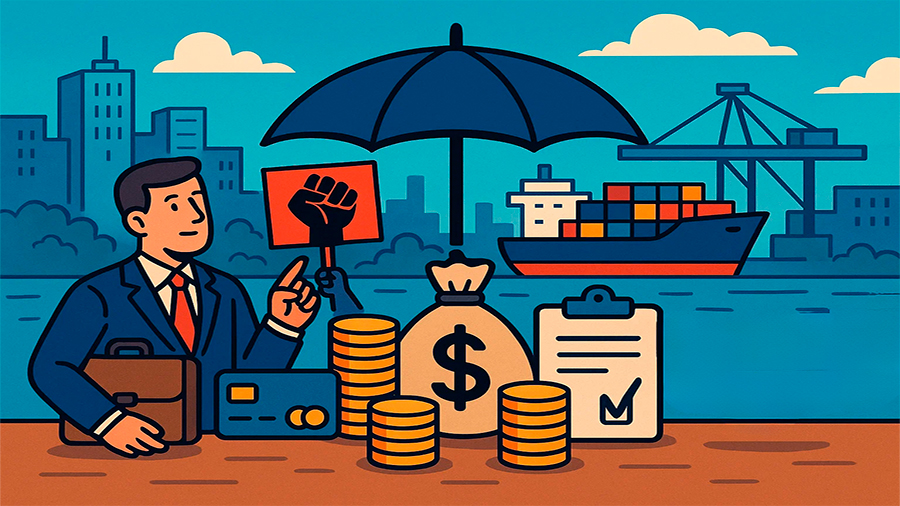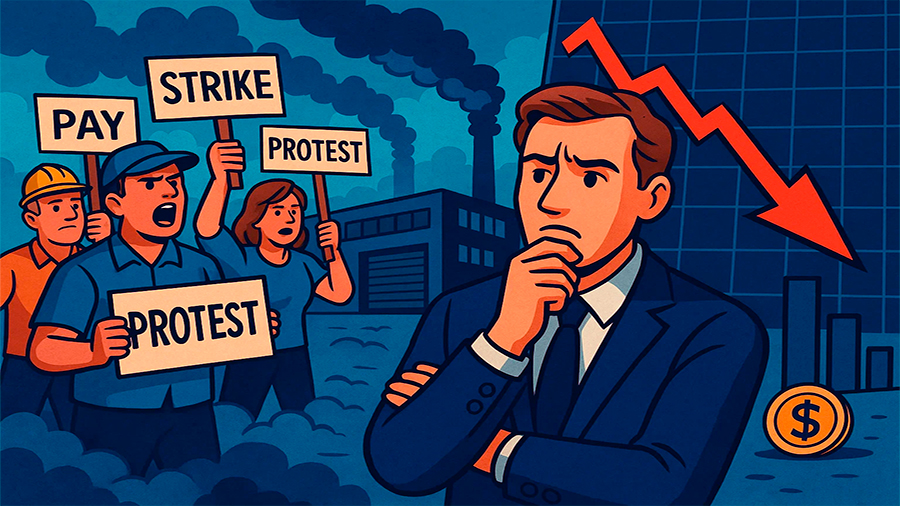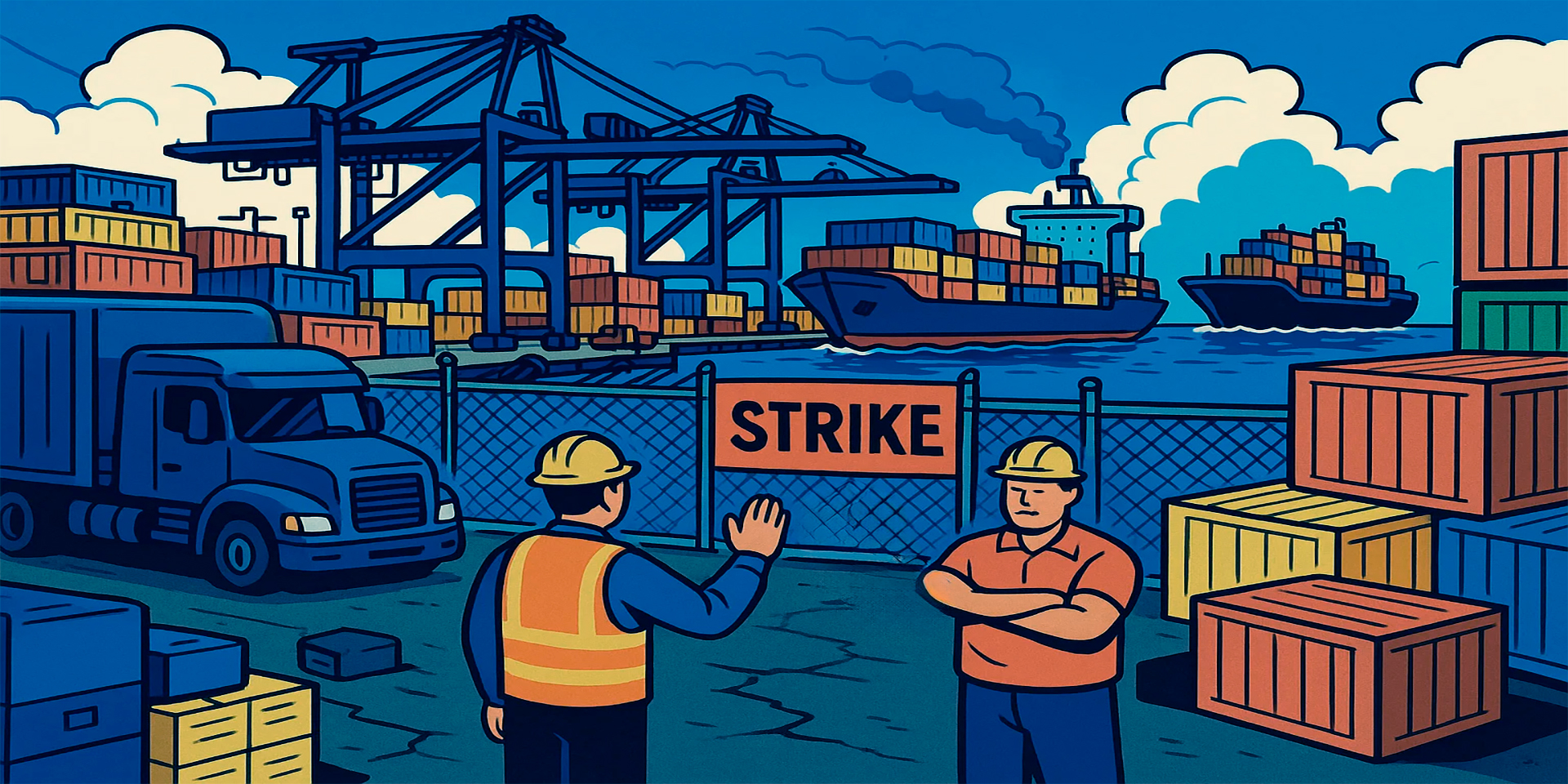Port Strikes and Logistics Finance: Why Credit Ratings Decline
How Port Strikes Affect the Creditworthiness of Logistics Companies
Port strikes are not just local disputes; they ripple through international trade, stalling goods worth billions. Cargo piles up, ships wait offshore, and trucks sit idle. For logistics businesses, the financial hit is immediate and far-reaching: revenues fall, costs surge, and reliance on credit increases. Rating agencies track these shocks closely, adjusting assessments as financial pressure builds. Even short disruptions can damage repayment capacity, trigger downgrades, and reshape investor perception. The impact on creditworthiness is as much about resilience and preparation as it is about the strike itself.
Revenue Losses During Strikes
Income evaporates when cargo stops moving. Logistics companies depend on volume, and every container stuck at a terminal delays invoicing. Warehouses overflow with uncollected goods, while clients freeze payments until their cargo clears. This sudden halt weakens liquidity, leaving firms scrambling for alternatives. For lenders and agencies, stalled revenues are red flags. They highlight fragility in cash flow and test repayment capacity. The longer goods remain stranded, the more severe the liquidity squeeze becomes, and the closer companies move toward credit deterioration. A strike lasting weeks can drain reserves and push firms toward borrowing just to survive.
Case: Los Angeles–Long Beach
In 2014–2015, the West Coast labor conflict left cargo stranded for months. Trucking firms reported a 30% drop in billable hours. Some small operators went bankrupt. Agencies issued negative outlooks for logistics firms tied to California imports, citing their limited capacity to absorb income loss.

Debt Dependence and Financial Pressure
Borrowing rises sharply during strikes. Payroll, storage fees, rerouting, and penalties demand immediate funds. Loans become the bridge, but they also swell liabilities. Credit agencies closely examine whether borrowing reflects temporary resilience or growing vulnerability. A company with healthy reserves and quick repayment ability can stabilize, but one already carrying debt risks crossing into distress. Downgrades follow when leverage increases without recovery in sight. The paradox is clear: loans help companies endure strikes but also highlight structural weaknesses in their financial base, pushing ratings downward.
Case: Rotterdam Strikes
Industrial action in 2016 forced Dutch operators to borrow heavily for rerouting via Antwerp and Hamburg. While services resumed, agencies flagged higher leverage ratios as critical risks, particularly for mid-tier companies that lacked access to diversified credit channels.
Operational Costs Amplify Risks
Strikes increase costs across the supply chain. Companies face rerouting expenses, airfreight surcharges, and warehouse storage fees for goods that cannot be delivered. Truck drivers demand overtime pay, fuel bills surge, and clients impose penalties for missed deadlines. Each added expense chips away at margins, reducing the ability to service loans. Credit agencies factor these strains into ratings, noting how quickly operating profits can collapse under prolonged unrest. Even firms with large customer bases struggle to offset expenses, as most cannot pass costs directly onto clients without losing market share.
Case: Felixstowe Strike
In 2022, Britain’s largest container port experienced strikes that diverted imports to smaller hubs. Truck shortages, double handling fees, and higher warehouse rents drove expenses up. Agencies flagged mounting operational costs as the main reason behind negative outlook revisions for several UK logistics operators.
Investor Confidence and Market Outlook
Investor trust erodes during strikes. Disruptions fuel doubts about long-term stability, reducing the appetite for bonds and equity in logistics firms. Agencies incorporate market confidence into credit ratings because it directly affects refinancing costs. When investors retreat, capital becomes scarce or more expensive. Loan covenants tighten, bond yields rise, and equity valuations shrink. This cycle compounds credit risk, as companies must spend more on financing just when revenues collapse. Even large operators suffer, proving that scale alone does not shield against the loss of trust triggered by labor unrest.
Case: Hong Kong Cargo Terminal Unrest
The 2013 strike at Hong Kong’s key terminal cut container handling capacity for weeks. Regional operators saw credit downgrades, not just from lost revenue but from shaken investor confidence. Agencies highlighted that reputational damage carried financial consequences far beyond the immediate disruption.

Comparing Strike Effects Across Regions
Port strikes affect creditworthiness differently depending on the region, but patterns emerge worldwide. Short disputes strain liquidity but are survivable for firms with reserves. Prolonged strikes force reliance on debt, eroding financial stability. In developed hubs like Los Angeles or Rotterdam, access to credit cushions immediate shocks but raises long-term leverage concerns. In emerging markets, where credit is less accessible, strikes push smaller operators toward insolvency more quickly. Agencies adjust ratings according to both the scale of disruption and the ability of local businesses to absorb or finance added pressures.
Examples Across Markets
- United States: Prolonged disputes magnify costs due to large-scale dependence on container imports, affecting entire coastlines.
- Europe: Diversified port networks in the Netherlands and Belgium soften blows, but debt reliance remains a major risk factor.
- Asia: Strikes in Hong Kong or Singapore ripple regionally, with investor confidence playing a decisive role in credit shifts.
- South America: Smaller operators face faster collapses due to limited liquidity and weaker banking support during unrest.
Adaptation and Credit Protection
Companies can soften the financial blow with proactive strategies. Credit agencies reward firms that diversify operations, maintain standby credit lines, or secure insurance for disruptions. Flexible contracts with strike clauses reduce penalty exposure, while operational diversification across ports spreads risks. Agencies interpret these measures as signs of resilience, reducing the likelihood of downgrades even during unrest. Preparedness demonstrates the difference between companies forced into emergency borrowing and those capable of navigating strikes without severe credit damage.
Examples of Resilience
A South American operator balanced routes between three ports, reducing strike exposure. A European firm inserted strike clauses into contracts, enabling cost recovery. An Asian shipping company locked in standby credit with banks, ensuring access to liquidity. Each of these steps helped stabilize credit ratings despite unrest.
The Conclusion
Port strikes reshape the financial profile of logistics companies by combining lost revenues, heavier debt reliance, rising costs, and shaken investor confidence. Credit agencies interpret these signals as indicators of both immediate and structural weakness. While borrowing provides short-term survival, it also amplifies long-term vulnerabilities. Yet resilience is possible. Firms with diversified operations, prearranged credit facilities, and contractual protections withstand strikes more effectively, preserving their creditworthiness. In a world where labor unrest remains a recurring threat, financial foresight determines whether logistics businesses emerge weakened or weather disruptions with stability intact.

